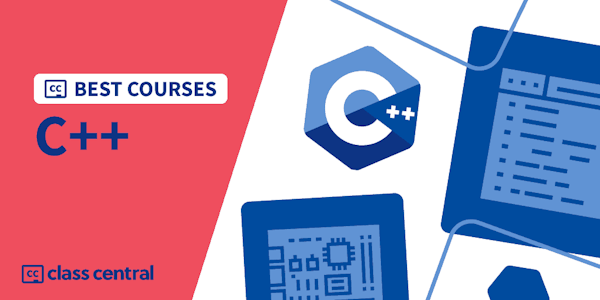This course guides you through the most important structural design patterns in modern C++, starting with an introduction to core concepts like design patterns, S.O.L.I.D. principles, and UML class diagrams. You’ll explore a wide range of patterns, including Adapter, Façade, Proxy, and others, with step-by-step explanations. Each module introduces a pattern, presents real-world examples, and provides implementation strategies.
You’ll learn how to apply these patterns in practical scenarios, such as designing game input interfaces, implementing console projects, and optimizing resource usage with proxies. By analyzing each pattern’s pros and cons, you’ll gain insights into when and why to use each approach in your own software projects. The course also focuses on enhancing performance and modularity, showing how design patterns reduce code complexity and promote reuse.
As you progress, you’ll deepen your understanding of advanced C++ concepts, such as smart pointers, shared resources, and pattern-specific idioms. By the end of the course, you’ll be able to confidently apply these patterns to create scalable, maintainable applications, mastering the art of high-level design in modern C++.
This course is designed for intermediate to advanced C++ developers familiar with object-oriented programming principles. A basic understanding of C++ syntax and familiarity with coding projects is recommended. No previous experience with design patterns is required.
Overview
Syllabus
- Introduction
- In this module, we will explore the fundamental concepts of design patterns in modern C++. We begin with an introduction to design patterns and UML class diagrams, then dive into the S.O.L.I.D. principles that serve as foundational guidelines for writing efficient and scalable code. The module concludes with a high-level overview of structural design patterns, setting the stage for deeper exploration in later sections.
- Adapter Design Pattern
- In this module, we will explore the Adapter Design Pattern, a key structural pattern used to reconcile incompatible interfaces in software. We begin with an introduction to the pattern and a basic example, followed by a hands-on application using game input. You'll learn the steps for implementation and understand the differences between object and class adapters, concluding with an analysis of the pattern's strengths and limitations.
- Façade Design Pattern
- In this module, we will dive into the Façade Design Pattern, which simplifies complex subsystems by providing a unified interface. We begin with a basic overview and example, followed by a four-part series where you'll build a console project using the façade pattern. Additionally, we will explore how to create a façade for Linux systems and wrap up with a discussion of the pros and cons of this pattern in modern software architecture.
- Proxy Design Pattern
- In this module, we will explore the Proxy Design Pattern, which provides a surrogate or placeholder for another object to control access. We will introduce key variations, such as virtual, protection, and remote proxies, demonstrating how to implement and apply them in real-world applications. You'll also learn how remote proxies function in distributed systems and delve into smart proxies for enhanced functionality. The module concludes with an evaluation of the benefits and trade-offs of using proxy patterns in software design.
- Decorator Design Pattern
- In this module, we will explore the Decorator Design Pattern, which allows for adding responsibilities to objects dynamically without altering their structure. Starting with an introduction and basic example, we move on to building decorators for streams, adding buffering, encryption, and compression functionalities. You'll learn how to implement the abstract decorator class and understand the differences between composition and inheritance in design. The module concludes with a breakdown of decorator types and an analysis of the pattern's strengths and limitations.
- Composite Design Pattern
- In this module, we will explore the Composite Design Pattern, which enables developers to treat individual objects and compositions of objects uniformly. We begin with an introduction to the pattern and a basic example, followed by a detailed application-to-user interface (UI) design. Through a three-part series, you will learn how to implement a UI class hierarchy and handle issues like adding parent pointers. The module concludes with an analysis of the pros and cons of using the composite pattern in various software designs.
- Bridge Design Pattern
- In this module, we will explore the Bridge Design Pattern, which separates an object's abstraction from its implementation to enable independent changes. We begin with an introduction and a basic example, followed by practical applications such as building a shape hierarchy and adding OpenGL support. You’ll also learn how to address hierarchy issues and implement advanced techniques like the handle-body and PImpl idioms. Finally, we’ll discuss the static bridge and evaluate the pattern’s strengths and weaknesses in different contexts.
- Flyweight Design Pattern
- In this module, we will explore the Flyweight Design Pattern, which minimizes memory usage by sharing common object states. We begin with an introduction and a basic implementation, followed by a three-part series on applying the pattern in game development for managing 3D models. You'll also learn how to implement string interning and use Boost.Flyweight to further optimize resource management. The module concludes with a discussion of the pattern's advantages and limitations, especially in performance-critical applications.
Taught by
Packt - Course Instructors




